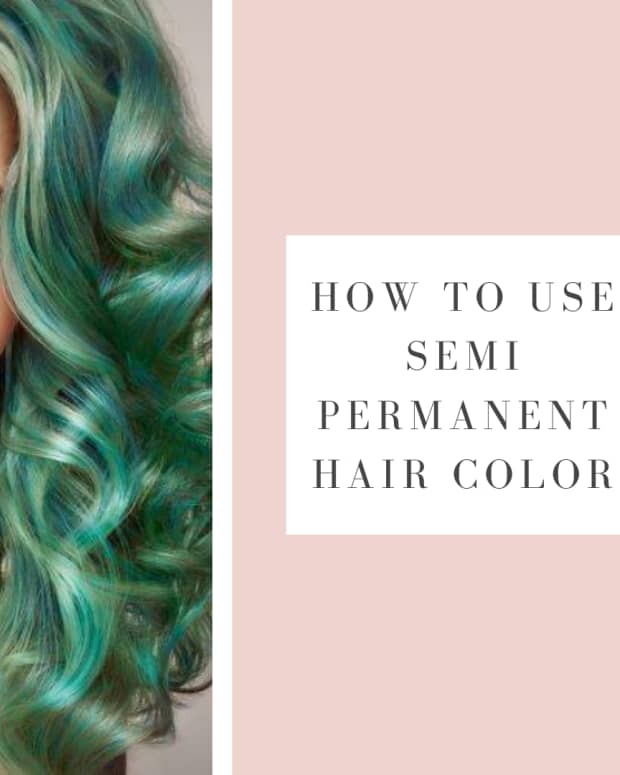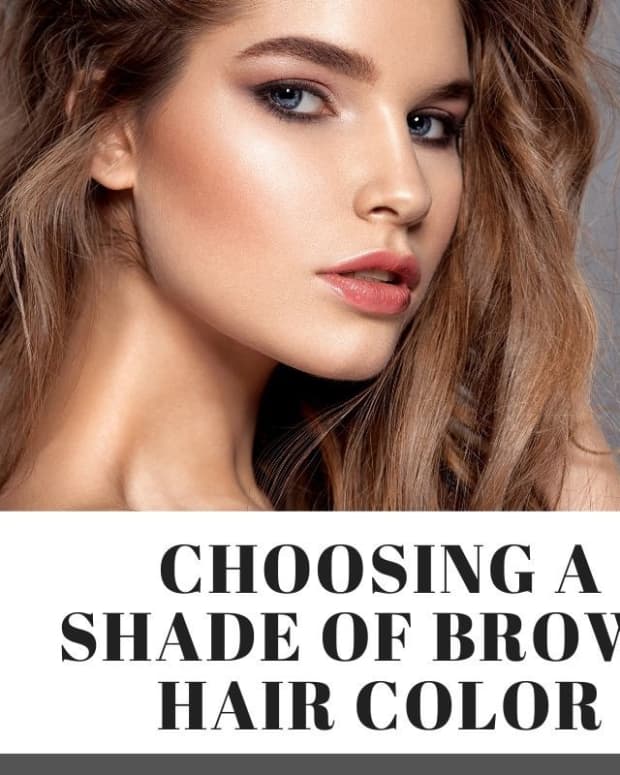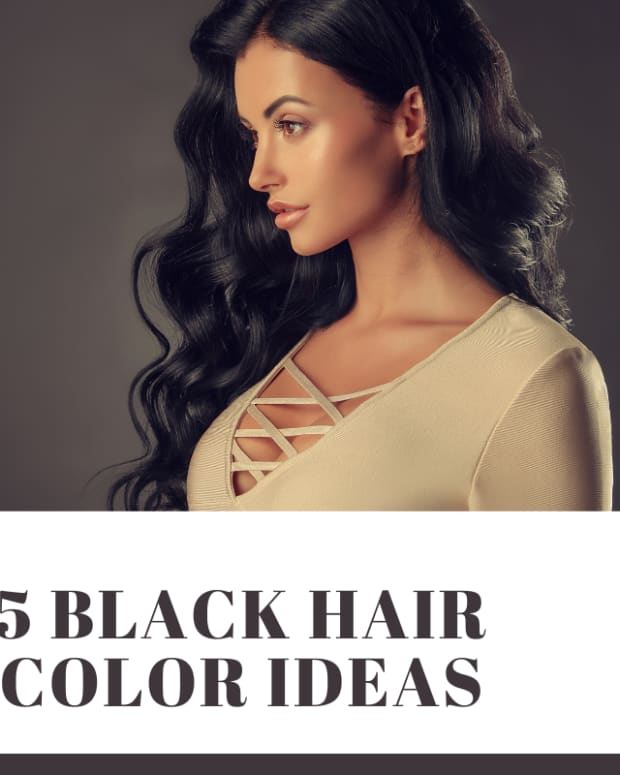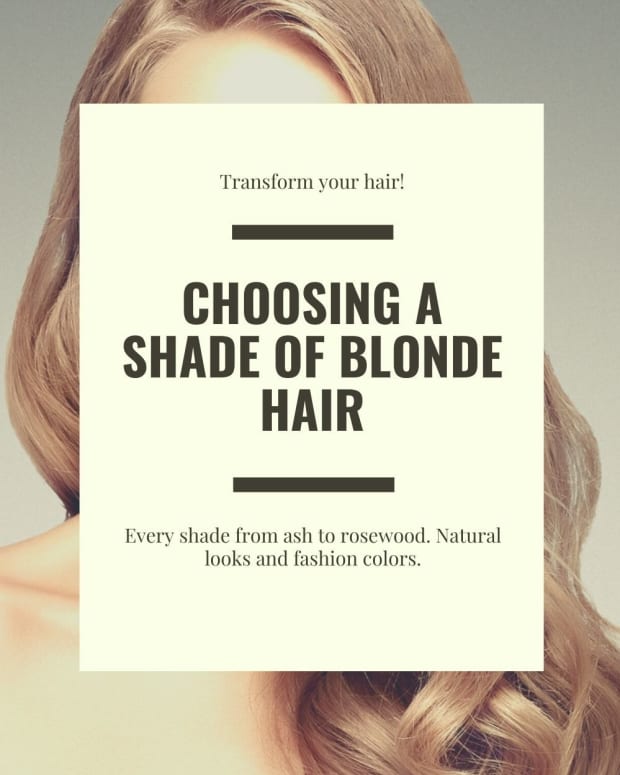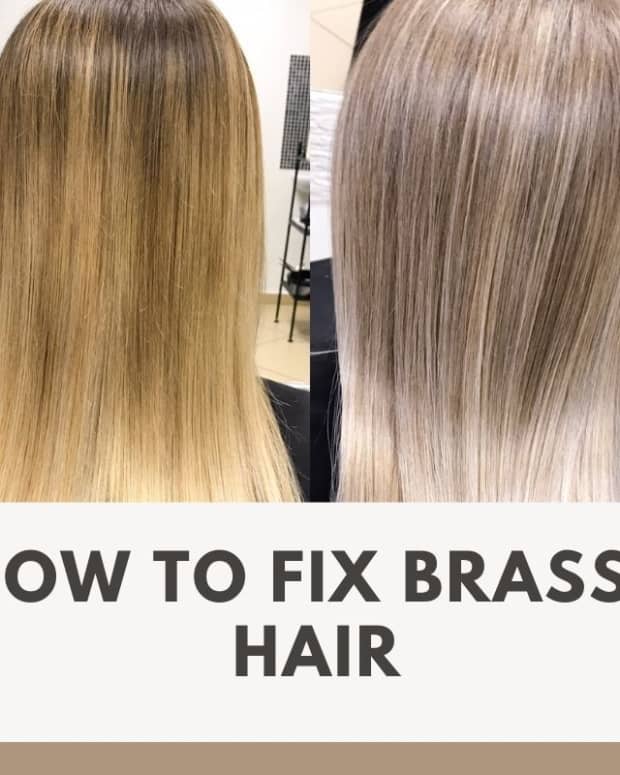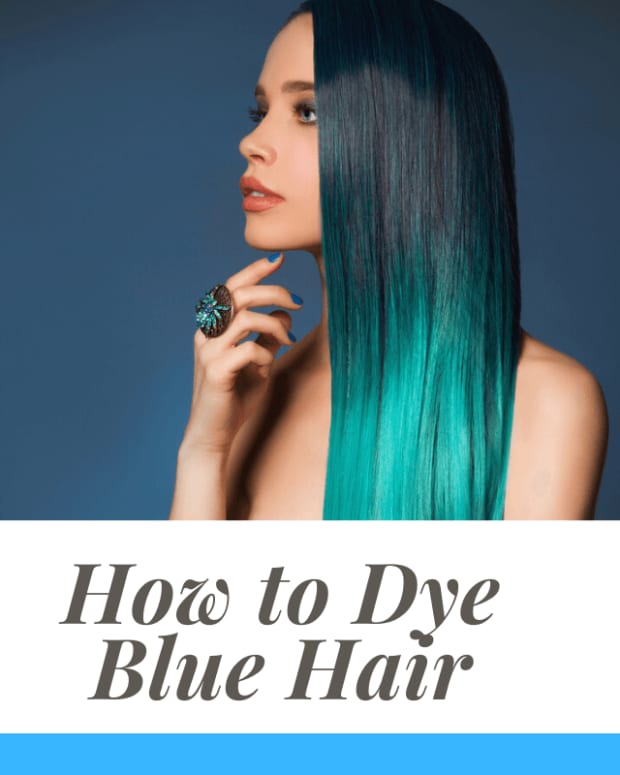How to Color Grey Hair
I offer professional advice and knowledge about all things hair dye. Discover the terminology, chemistry, and processes behind dyeing hair.
Grey hair coverage is a problem that many people encounter as they age. Whether you're trying to keep your natural color looking its best or test out a brand new shade, having any amount of grey can change the way you need to approach the dyeing process.
It may be necessary to use specific shades or even mix more than one shade of dye to color grey hair properly.
Why Is Grey Different?
Hair looks one color to the eye, but the shade you see actually consists of a number of colors, and it's the way these tones interact that gives the final result. In the case of brown hair, for example, there are yellow, red, and blue tones contributing to the shade of brown you see in the mirror, and this becomes even more obvious if the hair is lightened because it visibly turns red, then orange, then progressively paler shades of gold and yellow as more pigment is stripped out.
Grey hair differs from regular hair in being nearly or completely colorless though, and this means that depending on just how dark your natural hair color is, not only is a lot of color missing and needs to be replaced when dyeing but the specific colors missing from the hair cause it to react differently to any dye used compared to the rest of your hair.
It is for this reason that the process of coloring grey hair requires a slightly different approach to how you would normally dye your hair. In the same way that dyeing lighter hair a much darker color can turn out very wrong, your grey tresses can also react to dye in unintended ways. Ash brown dye could cause your hair to turn a greenish shade, whilst an auburn brown could look a bright orange or red on those strands.
This may not be a problem if you only have a small percentage of grey hair because it will blend in to an extent, but past a certain point, it will begin to noticeably affect the way your overall color looks.
Grey Density
The amount of grey hair you have can be described as a rough percentage estimate, ranging from 0–100%. This is something you have to judge for yourself based on appearance to determine the density of your own hair but will allow you to dye it properly because the amount of grey is what will determine how you change your dye mixture to compensate.
If you have more than 30% grey hair, this will require shade-mixing in most cases if you want specific shades like auburn, ash, golden, or any other color that isn't a neutral base. Hair that is more than 50% grey will need a different mixture and may also be more resistant to accepting color, but there are a few tricks to get around this and color grey hair with a beautiful, lasting result.
How to Achieve Grey Coverage
Like any situation where you want to dye light hair a much darker color, grey needs to be filled for it to turn out the right shade. This simply means replacing the missing base tone for the color you want. As an example, dark brown hair has a lot of red and yellow pigment that forms the base tone, and it is a comparatively smaller amount of cool-toned blue pigment that softens and tones this into a real brown shade.
If you just dye your hair with any shade you want, the dye doesn't necessarily contain a balance of red, yellow, and blue pigment to fill your hair and this is where mistakes can occur. Luckily, color manufacturers have always provided the ideal shade for working with grey hair and this is called a natural shade, or sometimes neutral.
The exact name and color code vary with brand obviously, but it's often denoted by an N or 0. A medium brown could be called medium natural brown, medium neutral brown, 4N, or 4.0 for example and all of these names usually mean the same thing. Dyes like this are purposefully designed to color grey hair by filling in the missing base tone so that your color turns out the way it should.
You can actually use any natural shade for any amount of grey (up to 100% grey) with many dye brands and your hair will dye properly without any strange results. However, you may want a specific shade like ash and this is where mixing shades is really powerful because you can effectively modify how the natural shade will turn out but maintain the filling effect as intended.
Shade Mixing
A natural shade is necessary for grey coverage in anyone with more than 30% grey hair, but you can also mix shades to modify how it will turn out and get a more individual result without changing its effectiveness. This is easily done by mixing the exact shade you like with the natural shade at the same level and the table below will help you do this.
If you have less than 30% grey, you can often use any dye and it will mostly turn out as expected because there's not a lot of grey to interfere with the result. If you have resistant grey hair that just doesn't want to accept color, or you intend to dye it much darker rather than just a few levels, you should use the mixing rule for 30–50% grey, which entails mixing one-third natural shade into your desired shade.
To color grey hair that is more than 50% density, your mixture needs to be at least half natural shade and half desired shade to ensure it is filled properly.
| Grey Percentage | Color Formula |
|---|---|
0–30% | Exact shade you want |
30–50% | 2/3 desired shade and 1/3 natural shade |
50–100% | 1/2 desired shade and 1/2 natural shade |
Read More From Bellatory
Dye Application
Whether you're using a natural shade alone or a mixture, it's important to apply the dye correctly to ensure an even and lasting result.
Developer
Developer is crucial to the color deposition process that occurs in permanent dyes and it's the ingredient that actually allows the dye to be permanent by producing a chemical change in the dye molecules within your hair. If you're using a box dye, it is generally already included within an applicator bottle that you will squeeze the tube of color into directly, while for salon dye, the color and developer are completely separate products.
To color grey hair, you'll need to use at least a 10 vol developer with your dye, though 20 vol is much more effective, especially for resistant grey. This is because a higher developer volume helps to force more pigment to be deposited in your hair and will often give a much more lasting result, as well as helping to ensure your hair fills properly.
Mixing
Once you have your developer ready, you'll need to mix this with the color or mixture of colors in an equal ratio unless the specific brand uses a different mixing ratio. As an example, if you wanted a light ash brown result on 70% grey, you can mix 30ml of light ash brown with 30ml of light natural brown to 60ml of 20 vol developer in a tinting bowl by brush.
If using a box dye and mixing shades, you will need to buy both boxes and mix the amount of the natural shade you intend to use into one applicator bottle, then the other shade into the same applicator bottle. For example, you can use half a tube of each color and if you needed more product for very long hair you could mix the other half of each tube into the second applicator bottle if required. Alternatively, mix everything in a mixing bowl by brush and apply that way if preferred.
Application
Application is as easy as applying your dye the same way you normally would for any other dye. Whether this means using a box dye and applicator bottle or a salon dye and applying to sectioned hair by brush is up to you, but make sure that you work quickly and evenly. Sectioning hair can help to do this regardless of what product and application method you're using.
One of the easiest and best ways to section your hair for a dye is to just divide it up into four quadrants by parting it down the middle and then again along the top of your hair. You can then work in one quadrant at a time, applying in layers of hair.
Development Time
After applying your dye you need to give it adequate time to develop so that it absorbs the color correctly and doesn't fade rapidly. When dealing with hair that is grey, you should use the maximum development time recommended by the brand in most cases.
Rinsing
The last step of any dye application is to rinse it once it has developed and this is very simple, though like any other part of the process there's a trick to making it even easier for yourself.
Rather than attempting to wash it all out at once, use only a small amount of water at first and massage this through the hair. This helps to emulsify the color and start to get the product moving more fluidly, after which you can rinse it under running water cleanly.
- How to Dye Your Hair
More about the general process and principles of dyeing your hair if you need a little extra help.
Resistant Hair
Resistance is the most common problem that can still occur despite doing everything else right when dyeing grey hair. This is when the hair doesn't take color very well and can often fade much more rapidly as a result too. If you have resistant hair, there are ways to deal with it though and you can still get lasting grey coverage despite your hair fighting you at every step.
One of the easiest ways to encourage greater color deposition is to use only a natural shade, or a greater amount of it in your shade mixture as this will help the hair to fill more effectively. If fading is more the issue, applying a clear protein filler prior to your dye can help it take better and last longer, as can treating your hair with repair and conditioning treatments to improve its condition.
For hair that is very resistant though, the ideal fix is something that is, unfortunately, brand and product-dependent. Products like Wella Koleston Perfect that feature double base tone shades are the best fix because these shades have a much greater amount of pigment deposition and are designed to deal with this exact issue.
Shades like this aren't meant to be mixed though as it dilutes down their strength and this is exactly what you don't want to do for resistant hair. Instead, if you want to alter the resulting color, you need to add a small amount of special mix (also known as intensifiers or pure additives in other brands) and this will allow you to change how the color turns out while still dyeing resistant grey hair effectively.
After-Care
Half the battle of coloring grey hair is maintaining it after the fact as this is where you can make a huge difference in how long your color lasts. If you've used a permanent dye, most of that dye is going to remain in the hair until you either strip it out artificially, or it grows out, but a certain amount does fade or wash out of the hair and this can lead to your color losing some depth and potentially looking dull.
Whilst you can't completely prevent fading of any dye, there are things you can do to reduce it. Some of the easiest ways include:
- Only shampoo your hair when needed
- Using milder shampoos—avoiding clarifying or anti-dandruff shampoos
- Using a conditioner designed for colored hair
- Using leave-in conditioners or hair serums
- Limiting the use of heated styling and always using a serum or heat-protectant spray beforehand
- Using hair treatments to repair and condition the hair
- How to Take Care of Dyed Hair
If you need more information about how to take care of your new color you can find it here.
Being mindful of how you wash and style your hair will help to ensure that your color continues to look good up until you need to apply a retouch to the roots or refresh the overall shade, and this is an essential step required for achieving lasting dye coverage in hair that is grey.
If you're careful with how you treat your hair, your new color will look stunning for weeks.
This content is accurate and true to the best of the author’s knowledge and is not meant to substitute for formal and individualized advice from a qualified professional.
© 2020 Maffew James








